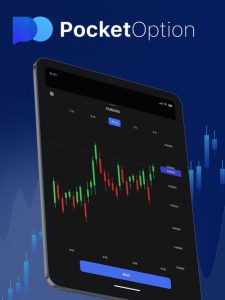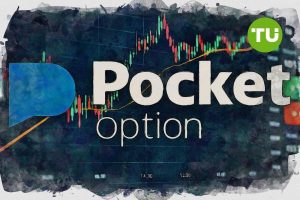
Trading with Ichimoku Kinko Hyo
The Ichimoku Kinko Hyo is not just a trading technique; it is a comprehensive indicator that offers insight into market trends, momentum, and potential support and resistance levels. For traders looking for a versatile approach to trading, integrating Ichimoku into their strategies can yield substantial results. To learn more about this approach, check out this resource: Trading with Ichimoku Kinko Hyo in Pocket Option https://trading-pocketoption.com/torgovlya-s-pomoshhyu-ichimoku-kinko-hyo-v-terminale-ot-pocket-option/.
Understanding Ichimoku Kinko Hyo
Developed in the 1930s by Goichi Hosoda, Ichimoku Kinko Hyo translates literally to “one glance equilibrium chart.” This indicator provides a wealth of information at a glance, encompassing support and resistance levels, trend direction, and potential entry and exit signals. One of the essential advantages of Ichimoku is its ability to give traders a holistic view of the market within a single glance, allowing for quicker and more informed decision-making.
Core Components of Ichimoku Kinko Hyo
- Tenkan-sen (Conversion Line): This is calculated as the average of the highest high and the lowest low over the last 9 periods. It reacts quickly to price changes and indicates short-term trend direction.
- Kijun-sen (Base Line): This line represents the average of the highest high and the lowest low over the last 26 periods. It provides insight into the overall trend and serves as a support/resistance level.
- Senko Span A (Leading Span A): Calculated by averaging the Tenkan-sen and Kijun-sen and projecting it 26 periods into the future, this line forms one boundary of the Ichimoku cloud.
- Senko Span B (Leading Span B): This is the average of the highest high and lowest low over the last 52 periods, also projected 26 periods into the future. Together, Senko Span A and B form the Ichimoku cloud.
- Chikou Span (Lagging Span): This line is simply the closing price, plotted 26 periods into the past. This indicator helps confirm trends and signals by analyzing the relationship between current price and past price action.
How to Use Ichimoku Kinko Hyo for Trading
Successful trading with Ichimoku Kinko Hyo requires an understanding of how each component interacts with others. Here are some practical ways traders use this indicator:

Identifying Trends
The most fundamental use of Ichimoku is identifying trends. A common rule is that when the price is above the cloud, it indicates an uptrend. Conversely, when the price is below the cloud, it signifies a downtrend. If the price is within the cloud, it suggests a consolidation phase or a potential market reversal. Observing the relationship between the Tenkan-sen and Kijun-sen can further confirm trend direction—when the Tenkan-sen crosses above the Kijun-sen, it generates a bullish signal, and a cross below indicates a bearish signal.
Entry and Exit Points
In addition to identifying trends, Ichimoku can help traders pinpoint entry and exit points. For example, traders may look for a bullish entry when:
- The price is above the cloud.
- The Tenkan-sen crosses above the Kijun-sen.
- The Chikou Span is above the price chart.
Conversely, a bearish entry may be indicated when:
- The price is below the cloud.
- The Tenkan-sen crosses below the Kijun-sen.
- The Chikou Span is below the price chart.

Support and Resistance Levels
The Ichimoku cloud itself serves as a robust support and resistance area. The boundary lines (Senko Span A and B) often act as significant levels where price action may reverse or consolidate. Additionally, the Kijun-sen and Tenkan-sen can also serve as dynamic support and resistance lines, further assisting traders in making informed decisions on their trades.
Benefits of Using Ichimoku Kinko Hyo
- Comprehensive Indicator: Ichimoku Kinko Hyo provides multiple signals within a single indicator, reducing the need for additional tools and simplifying the trading process.
- Visual Clarity: The cloud and the other indicators offer a clear visual representation of market conditions, helping traders make faster decisions.
- Versatile Timeframes: Ichimoku works across various timeframes, making it adaptable to both day trading and long-term investment strategies.
- Risk Management: The indicator can help establish stop-loss and take-profit levels based on identified support and resistance zones, allowing for better risk management.
Challenges and Considerations
While the Ichimoku Kinko Hyo offers many advantages, it is not foolproof. Some potential challenges traders may face include:
- Complexity: For beginners, the multiple components and lines of Ichimoku can be overwhelming and may require time to fully grasp their interactions.
- Lagging Indicator: As a lagging indicator, Ichimoku can sometimes react slower than the actual price movements, leading to missed opportunities.
- Market Conditions: The effectiveness of Ichimoku can vary in different market conditions. In trending markets, it performs well, but during ranging markets, signals can become less reliable.
Conclusion
Trading with Ichimoku Kinko Hyo can significantly enhance a trader’s market analysis and decision-making capabilities. By understanding its components and how to interpret them effectively, traders can identify trends, entry and exit points, and make informed decisions concerning support and resistance levels. As with any trading strategy, practice and discipline are essential to achieve consistent results.
